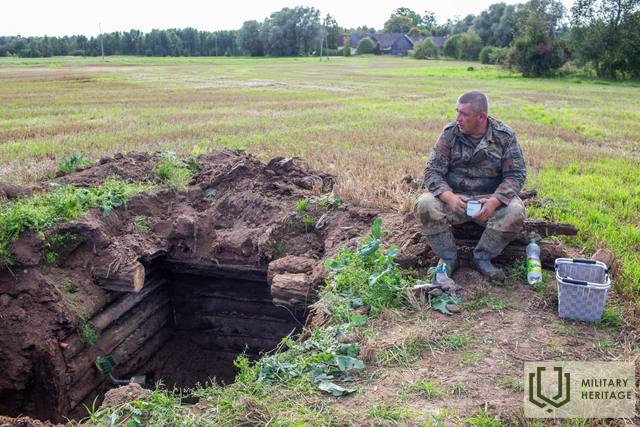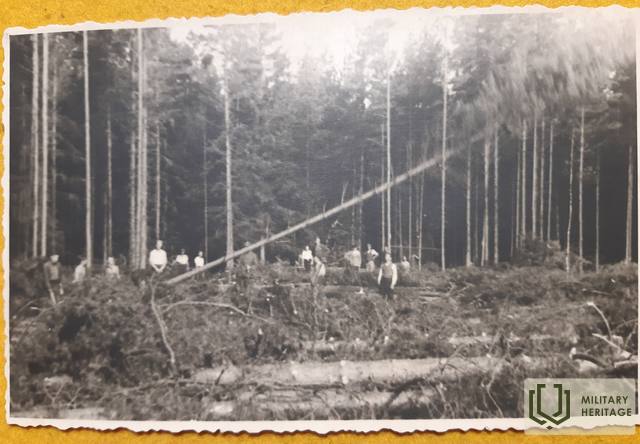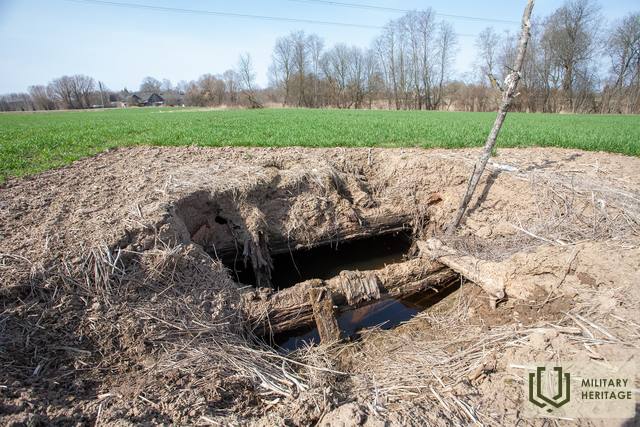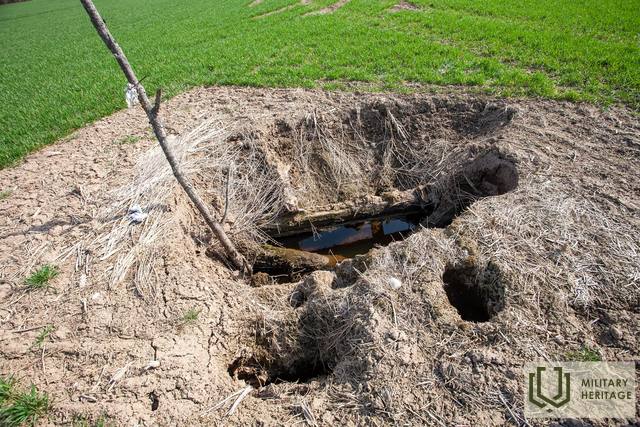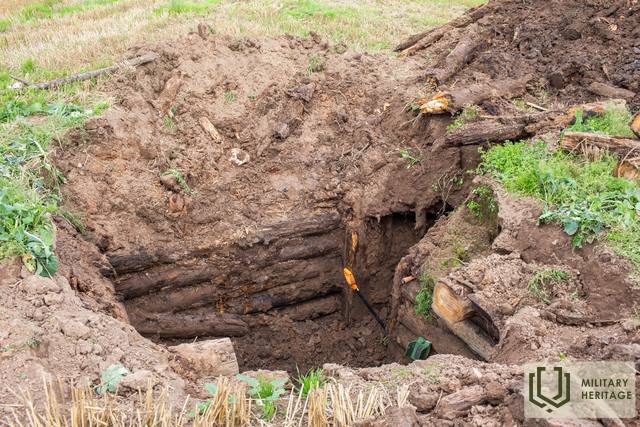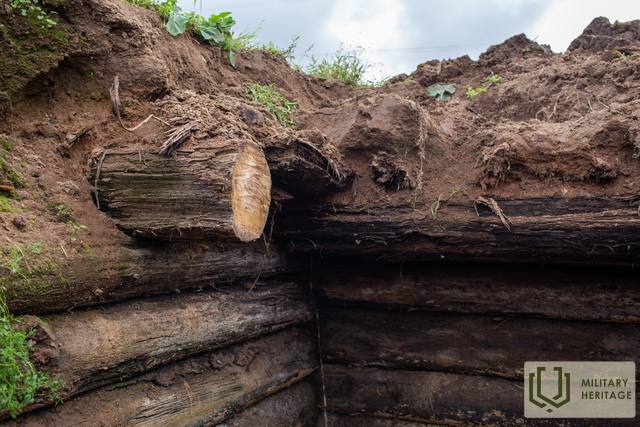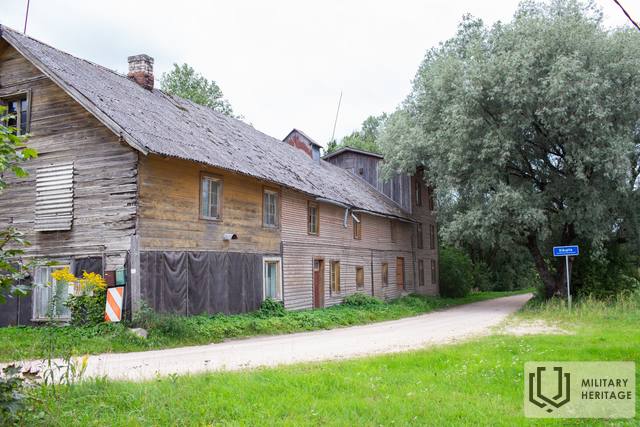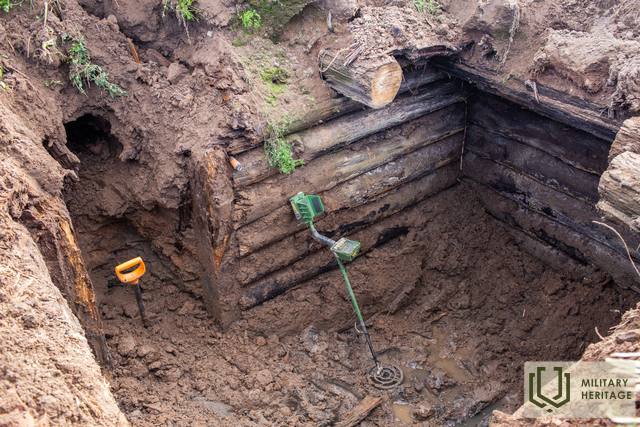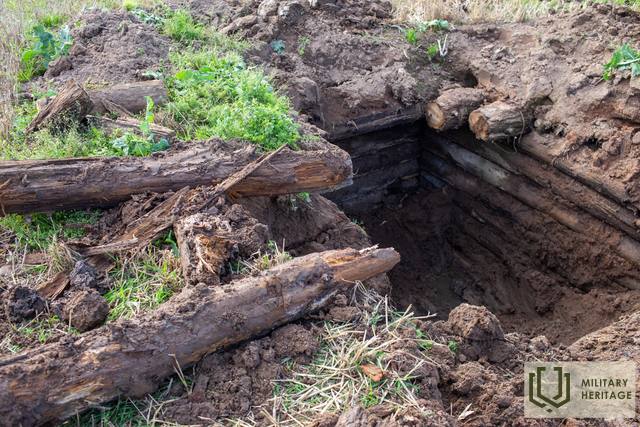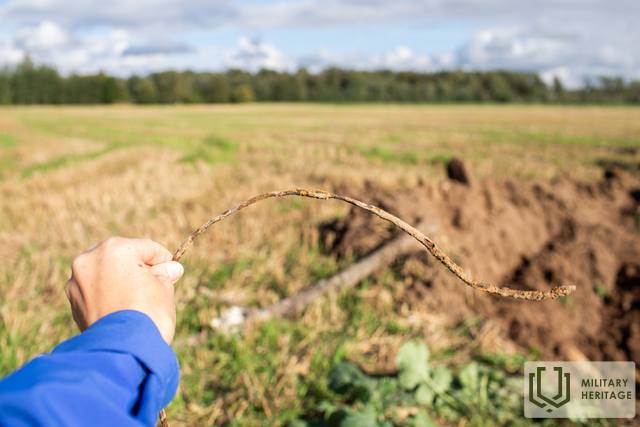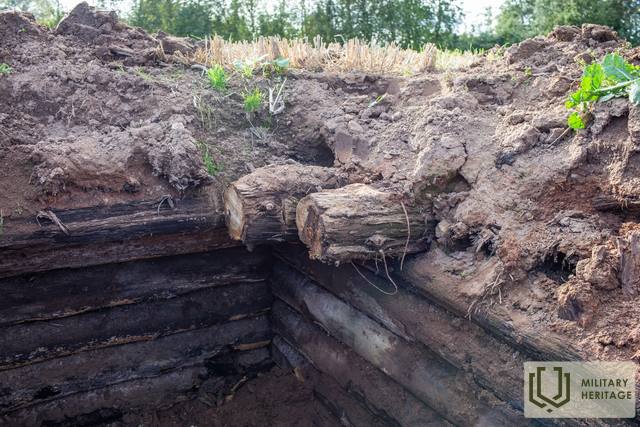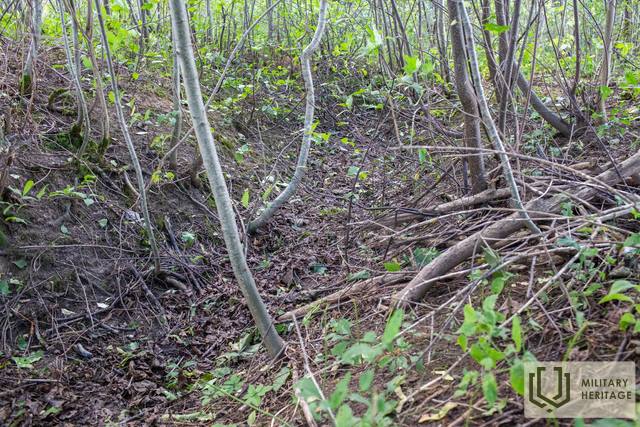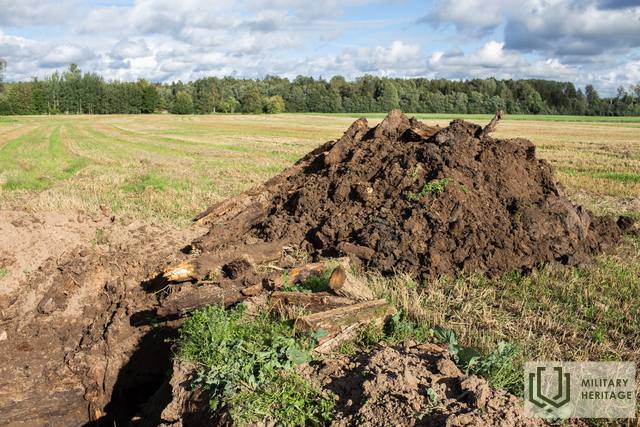World War II German army bunker Bunker


 52
52

It was located near the house in "Brankša" in a grain field.
On September 2, 2021, under the leadership of Saulkrasti region history enthusiast Andris Grabčiks, in coordination with the tenant of the agricultural land, Ines Karlova, excavation work took place on the German army bunker of the Sigulda defense line of World War II.
"77 years have passed since the bunker was built, having experienced both an attack by the Soviet army and agricultural machinery driving over it. Only 3 years ago did it partially succumb to heavy machinery. To prevent the floor from being submerged in water, a drainage system was developed with a water storage reservoir at the entrance, which was drained if necessary. The floor of the bunker is made of round logs 10 cm in diameter and was covered with straw. This bunker is not one of the large ones, but it is quite sufficient for about 6 people. This bunker is not the only one in this area, but one of the few that has been well preserved." - this is how Andris Grabčiks tells about the bunker.
After the information was published on the internet, 2 scanned historical photographs were received from historian and owner of the Saulkrasti Bicycle Museum Jānis Seregins with the inscription "29.08.44, Saulkrasti, Vidriži parish" and the comment: "The photographs were obtained from a Saulkrasti woman, who is now deceased. According to her, refugees from the Pskov and Leningrad regions, whom the Germans had driven out of their homes during the retreat, had settled in Saulkrasti. They were employed in digging trenches on the defense line near Ķīšupe. One of the pictures shows people working in the forest. In this way, logs were obtained, which we can now see in the bunker near Brankšai. The second picture shows them being fed at a distribution point or in the kitchen set up at the house. I think it is the Brankšai mill."
The bunker has survived from WWII on the Sigulda defense line.
The bunker site was first surveyed in April 2021, but due to high groundwater levels, excavation work could not take place.
The bunker was located on agricultural land and, after excavation and research, was filled in so as not to interfere with agricultural work.
Used sources and references:
Research work by Andris Grabčiks, Gita Memmėna
Historical photographs from the private collection of Jānis Seregins
Related timeline
Related stories
About the events of the children's colony "Rūķīši" during the pre-war and World War II periods
Children were taken from the families of partisan supporters. In March 1943, there were 1,100 children in the Salaspils camp. About 250 children died of measles, typhoid fever and other diseases, several hundred children were transferred to farms in surrounding parishes, and about 300 children ended up in orphanages in Riga's Jurmala, Igate and Saulkrasti.
In Saulkrasti, the children ended up at the Latvian Children's Aid Society's children's colony "Rūķīši".




